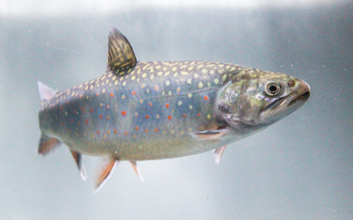Increase Feed Efficiency in Aquaculture
Why is increasing feed efficiency in aquaculture important?
Mitigating disease risks is one of the greatest challenges in aquaculture. This must be achieved while maintaining and improving feed efficiency, also known as feed conversion rate (FCR). As feed constitutes the largest cost factor for any production system, the use of available ingredients must be maximized.
Feed essentially provides energy and nutrients to support the development of each species. Formulations must be highly digestible, and each ingredient must add value and enrichment to the diet to impact performance. Choosing a feed that is right for your farm means you could:
- Potentially use less feed
- Improve production and output
- Reduce your environmental impact
Signs and causes of poor feed efficiency in aquaculture
The classic signs of poor feed efficiency are:
- Decreased performance
- Increasing feed costs
- Lower digestibility
A thorough farm assessment is generally recommended to successfully determine how your farm can improve feed efficiency.
Strategies to help increase feed efficiency in aquaculture
- Create an optimal fish ecosystem
- Maintain water quality
- Support internal defense systems
To achieve optimum feed efficiency, other aspects of the farm must also be considered. This includes efficient farm management, maintaining water quality, providing a well-balanced feed and supporting the overall health and welfare of the animal. Small changes can significantly impact profits. It may also be necessary to look at the nutritional profile and quality of the raw materials to ensure the perfect balance on-farm.
Attempting to improve productivity and lower feed conversion ratio (FCR) will put increased pressure on the digestive tract. Maintaining the health and welfare of fish and shrimp will still be critical for continued production. By leveraging Alltech technologies, we can positively influence and strengthen the gut intestinal flora and infrastructure to maximize the absorption of nutrients. In doing this, the immune parameters are improved and capable of withstanding the everyday stressors.
Boost natural defenses
Aquate® has been specially formulated to meet the specific requirements of each aquatic species and life stage. It encourages healthier and more robust populations and boosts natural defense systems, aiding gut function. The best farm results are seen when feeds containing the Aquate package are fed throughout the entire life of the fish, as this feeding strategy creates continuity in the supply of their nutritional requirements.
Put enzymes to work
Utilizing enzymes in aquafeed can help fish and shrimp digest ingredients better. Specifically, Alltech has developed a feed technology called Allzyme® SSF, which produces a natural complex of enzymes by using a breakthrough solid-state fermentation system. With a natural enzyme complex like Allzyme SSF, fishmeal content can be reduced in fish diets in both carnivorous and herbivorous fish while maintaining and improving growth performance compared to high-fishmeal diets.
Optimizing feed efficiency can greatly improve aquaculture production profitability and may also reduce environmental impact.
Benefits of Allzyme® SSF in aquaculture
- Promotes nutrient release
- Optimizes feed digestion
- Reduces environmental impact
Allzyme SSF allows for flexible feed formulation through the inclusion of by-products and alternative raw materials and by reducing the density of the diet. It also promotes nutrient release — including amino acids, energy, calcium and phosphorus — and optimizes feed digestibility while supporting a healthy digestive system and better cost-efficiency.













